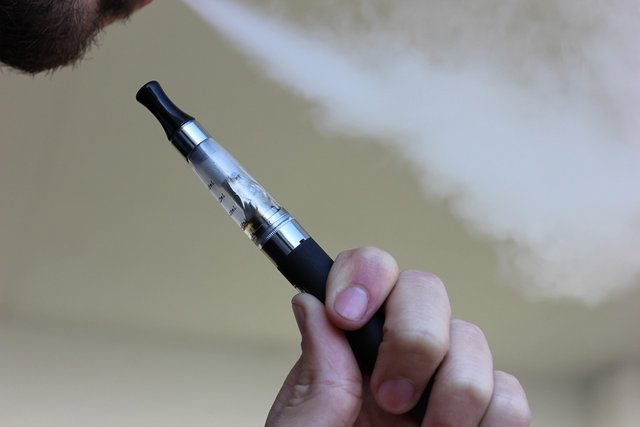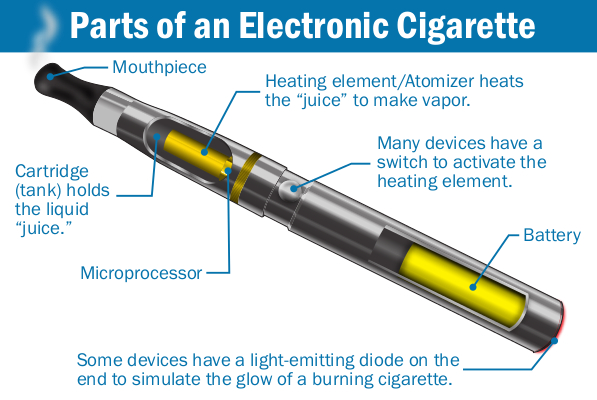Electronic Cigarette Dangers, Side Effects, and Passive Vaping
Since its appearance in the late 2000s, the world of electronic cigarettes is the subject of many beliefs, rumors, and misconceptions. While some are well-founded, others are much less so.
To help you see more clearly, we have compiled in this guide on the most common claims about vaping. For each, we have taken care to provide a clear answer based on easily verifiable sources.
Electronic cigarettes are more dangerous than tobacco
FALSE. The e-cigarette is less dangerous than tobacco because it does not produce carbon monoxide, a highly toxic compound resulting from the combustion of a classic cigarette. It also does not contain the 4,000 harmful or carcinogenic substances found in tobacco.
This is reason enough for vaping to be officially recognized today as a risk reduction tool. Tabac Info Service indicates on its site that if you stop smoking altogether by using an electronic cigarette instead, you reduce the risk of developing serious diseases like cancers. A position shared by the National Academy of Medicine established that vaping is less dangerous than cigarettes. For their part, the British health authorities have been claiming for several years that e-cigs are at least 95% less harmful than tobacco basing their comments on scientific research.
As a reminder, classic cigarettes cause the death of more than 480,000 people each year in the USA alone, according to the Centers for Disease Control and Prevention.
We do not know what is in an electronic cigarette
FALSE. The composition of an electronic cigarette does not suffer from any mystery. First of all, it incorporates a simple vaporization mechanism: the battery will send energy to a resistance so that it heats the e-liquid present in the tank, thus transforming it into vapor. This e-liquid will be composed of several elements, which are also well-known.
First of all, the e-liquid mainly contains propylene glycol (PG) and vegetable glycerin (VG). PG has long been used in the food and pharmaceutical industries. It has several interesting properties in the context of the vape. It is an excellent support for the aromas and it also has the effect of reinforcing the hit (sensation in the throat sought by smokers) caused by nicotine. VG, on the other hand, is a non-toxic solvent used in the food, pharmaceutical, and cosmetic industries. Its purpose is to increase the volume of vapor generated.
E-liquid can also contain nicotine, which is the only substance that classic cigarettes and electronic cigarettes have in common. It is not carcinogenic, but has addictive properties. As part of the vape, its role is to fill the gap of the smoker who begins to quit smoking.
Finally, an e-liquid can contain food flavors that are either natural or synthetic. They are the component that will give flavor to the inhaled vapor. On MigVapor, there is a wide variety of flavors of electronic cigarettes so that anyone can find the one that suits them.
The electronic cigarette is not controlled
FALSE. From August 8, 2016, the US Food and Drug Administration (FDA) requires e-cigarettes to be regulated as tobacco products. The FDA rule also prohibits the sale of cigarettes to minors. The FDA has classified e-cigarettes as drug delivery devices and is subject to regulation under the Food, Drug, and Cosmetic Act (FDCA) before they are imported or sold in the United States.
Nicotine is carcinogenic
FALSE. The danger of tobacco cigarettes is not related to nicotine. As we have seen previously, it is substances such as carbon monoxide or tars that promote the development of cancer. Nicotine in itself is not carcinogenic, which is why it can be found in many nicotine substitutes sold in pharmacies (patches, gums, etc.).
This does not prevent nicotine from suffering a bad reputation, in large part due to the confusion between addiction and toxicity. It is indeed its consumption that causes addiction in the smoker, but it is not its consumption that will cause cancer.
The electronic cigarette makes you dependent
TRUE. An e liquid for electronic cigarettes may contain nicotine and therefore be addictive. Vaping, however, is only intended for smokers who have already developed a nicotine addiction. It is for this reason that non-smokers should not use an e-cigarette.
The vocation of the nicotine present in e liquid is to fill the lack felt by the smoker in the context of smoking cessation. Once he has successfully quit smoking, he can gradually lower his nicotine levels to reduce his nicotine addiction.
Electronic cigarettes are more harmful to those around me than tobacco
FALSE. The vapor from an electronic cigarette does not expose those around you to inhaling 4000 chemicals contained in tobacco smoke, including irritants, toxicants and more than 50 substances that may cause or promote the development of cancer.
Passive vaping would therefore be less problematic than passive smoking, the harmfulness of which has been proven worldwide. According to an official report requested by the Ministry of Health, in a room where an e-cigarette is used, the elements contained in the vapor disappear 95% in less than a minute. It is accepted that the half-life of vapor is about one hundred times less than the half-life of tobacco smoke.
They, therefore, conclude that the vapor of an electronic cigarette not only lasts less than the smoke of a conventional cigarette but that it is also much less toxic.
This does not mean that you shouldn't protect those around you. We recommend in particular not to expose minors to the vapor of an electronic cigarette, and as much as possible, do not vape in the presence of non-smokers.
Vaping for less smoking is enough to reduce health risks
FALSE. The simultaneous use of electronic cigarettes and conventional cigarettes is not a problem in the short-term. This can even be recommended at the start to get you used to vaping while maintaining an optimal supply of nicotine.
However, quitting smoking completely must remain a priority long-term goal. Even if you reduce your consumption, smoking a little still exposes you to the harmful effects of tobacco. A Norwegian study has shown that light smokers (less than four cigarettes per day) have a 50% higher death rate than non-smokers. In particular, they are three times more likely to die of cardiovascular disease than a person who does not smoke.
If you use an electronic cigarette and continue to smoke, even if you have reduced your tobacco consumption, the risk of developing tobacco-related illnesses therefore persists. The best thing for your health is trying to quit completely and permanently.
Electronic cigarettes can cause unwanted effects
TRUE. Vaping frequently can create a feeling of dry mouth or even irritation in the throat. It is important, in this case, to stay hydrated. It is also possible that too much nicotine can cause headaches, nausea, or dizziness. In this case, do not hesitate to lower your nicotine level.
Finally, it can happen that an electronic cigarette causes coughing fits. Too high of a nicotine level can be the cause. However, in the majority of cases, e-cigarettes only make you feel the damage that tobacco causes on your mucous membranes. The sooner you quit smoking, the faster this irritation will subside.
The electronic cigarette makes you fat
FALSE. Even if no serious study has shown that the electronic cigarette does not make you fat, its operating principle allows you to limit the weight gain associated with quitting smoking. Smokers who do not use nicotine substitutes tend to compensate for this with food. This is an instinctive reflex that also has the advantage of occupying their hands.
By stopping smoking thanks to the vape, not only is the lack filled by the nicotine contained in the e-liquid, but in addition the 'gesture of the smoker' is kept. So the body does not need to find any other compensation.
You can be allergic to electronic cigarettes
TRUE. It is possible that electronic cigarettes can cause a contact allergy if you are allergic to certain metals (nickel for example). The solution in this case is simply to avoid models that contain it by referring to the product sheet.
Some components of the e liquid can also be problematic, starting with the flavors. People with food allergies should therefore be careful with their e-liquid recipes and avoid those that mimic the taste of foods that they usually cannot eat.
Finally, it is possible to be allergic to propylene glycol (PG). This type of allergy is very rare (less than 1% of the population would be affected) and should not be confused with intolerance to PG, which is more common among vapers. This intolerance will manifest itself in less serious symptoms (persistent cough, sore throat) which may be the same as those experienced when the nicotine level is too high. In this case, the best solution is to opt for e-liquids with a higher rate of vegetable glycerin (VG). For those who are allergic, you should go for 100% VG e-liquids or Vegetol.
The electronic cigarette is a medicine
FALSE. The electronic cigarette is not a medicine and no e-cigarette has a marketing authorization on the market (AMM) as a drug. No manufacturer has yet filed a request in this direction.
For this reason, electronic cigarettes cannot be prescribed by a healthcare professional as a substitute for tobacco, nor as an aid to quitting smoking. They also cannot be sold in pharmacies because they are not on the list of goods that pharmacists can prescribe.
The electronic cigarette is therefore currently considered a consumer product.




.jpg)